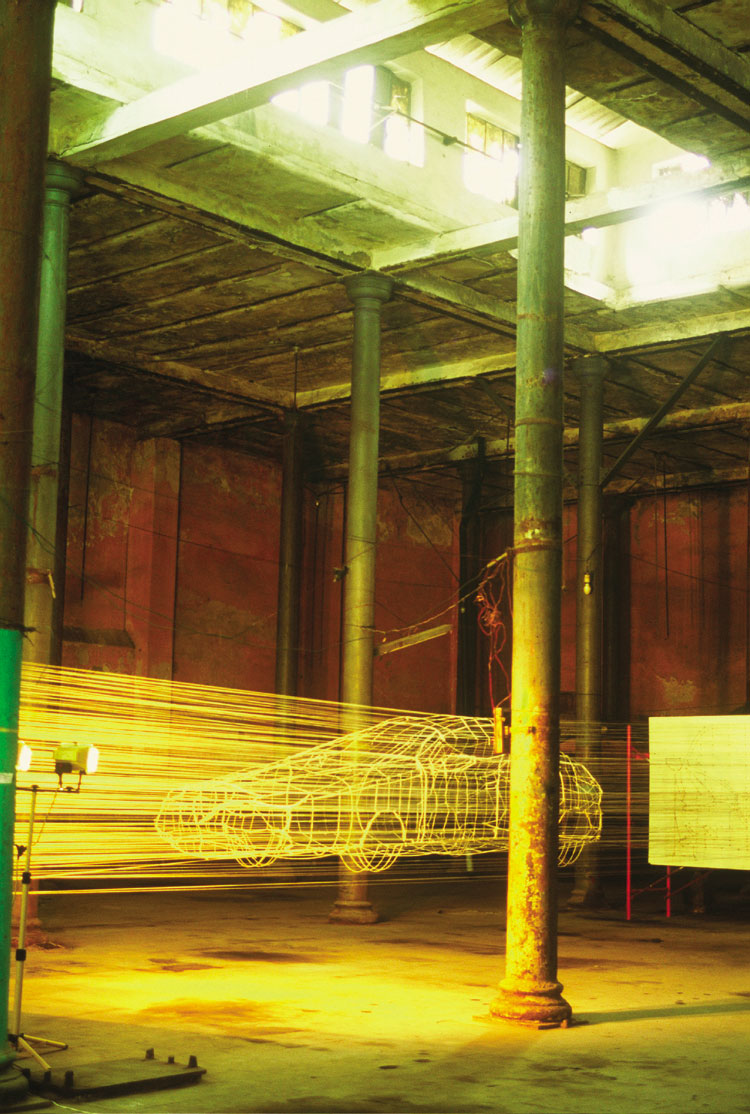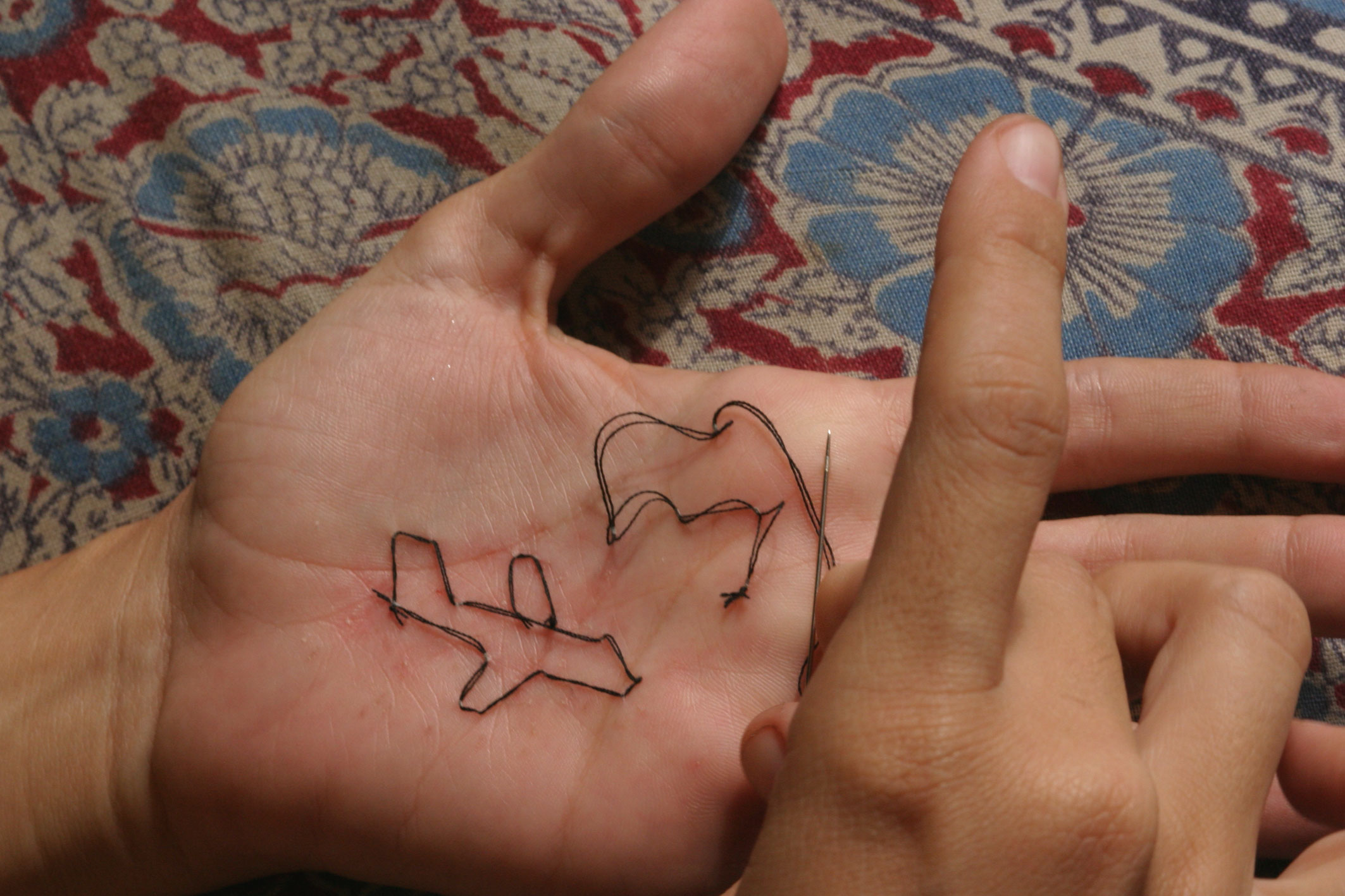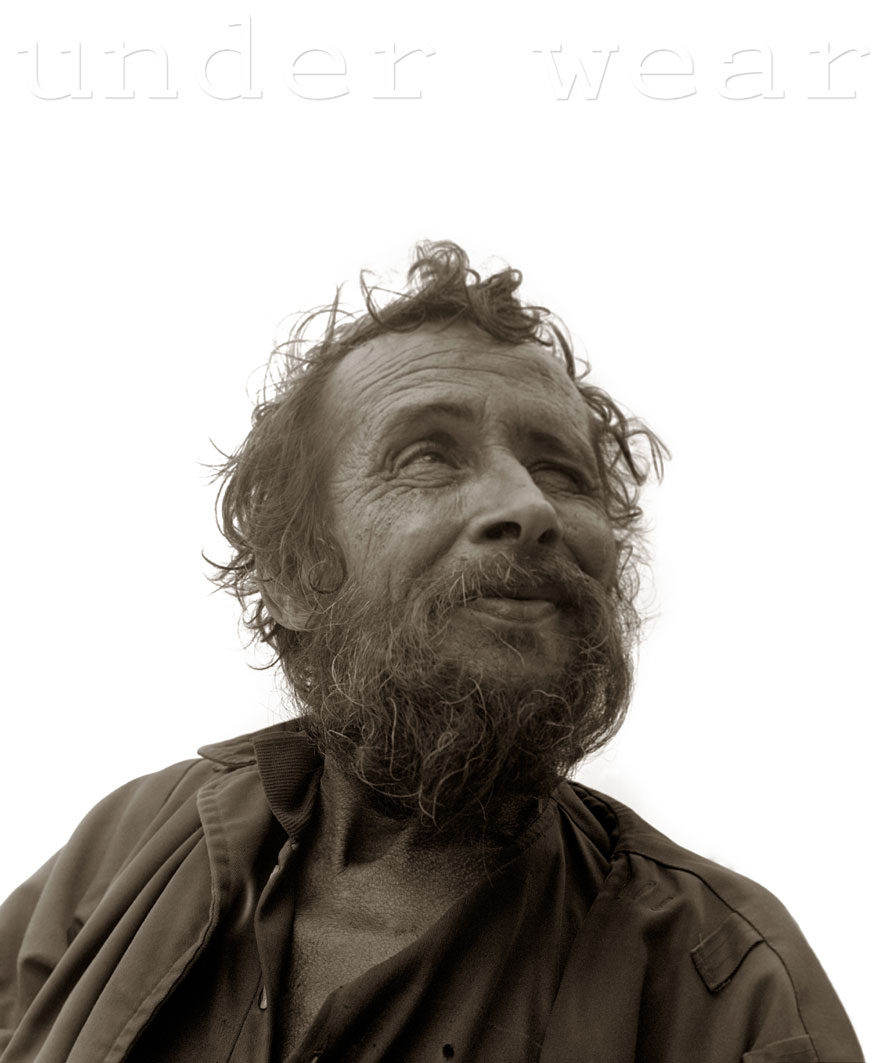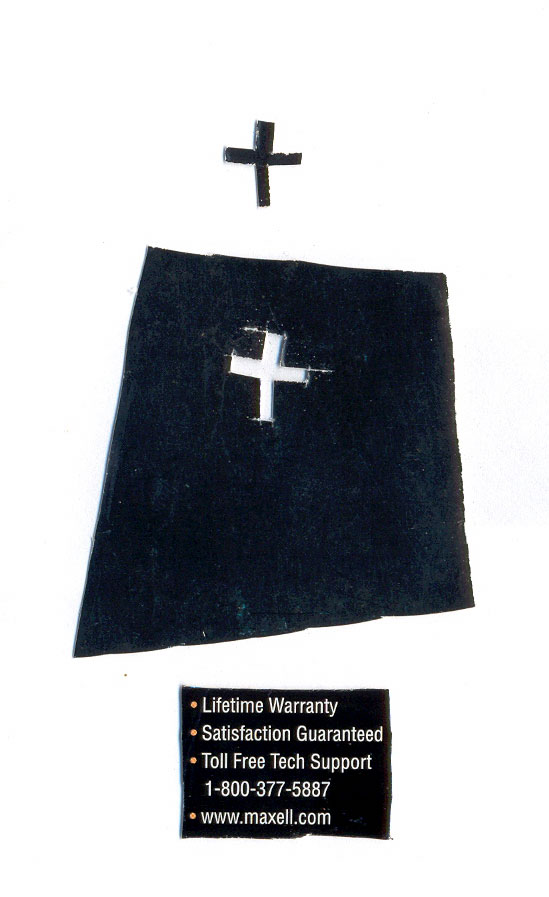LA VIDA ES UN SUEÑO
When
one has lived through countless disappointments
What does one more matter?
After knowing treason in life
You shouldn’t cry
You must realize that everything is a lie
That nothing is true
One must live for the happy moment
One must enjoy what there is to enjoy
Because when all has been accounted for
Life is a dream
Duvier del Dago “Castles in the Air”, cotton thread, 2005
For many Cubans who know the classic song by Arsenio Rodriguez by heart, those bittersweet words probably ring true. The comparison of life to a dream is perhaps nowhere clearer than on the island of Cuba, where past, present, disappointment, hope, poverty and wealth are all part of the endless give and take of daily life. Cuba is a country that flourishes despite itself; a country where the harsh realities of life are translated to hopes and dreams as emphatically expressed in its music, literature and visual arts.
Diana Fonseca, “Killing Time”, video 2005
For those Cubans who decide to leave their homeland, it is not uncommon that the daily realities of Cuba are eventually transformed into cherished memories and dreams of the past. The artist Maria Magdalena Campos-Pons, who was born in Cuba and now resides and works in Boston, is a perfect example if this experience. Indeed, the bilingual title of one of her works perfectly evokes this sentiment, When I am Not Here, Estoy Alla – I am there, spiritually rooted on the island of Cuba. Campos-Pons lives as an American, yet her heart still beats for Cuba. She is one of many artists who were born and raised in Cuba who have relocated to other places around the globe, who will perhaps never truly distance themselves from Cuba. It is easy to understand how Cuban culture gets into the bloodstream for life; Cuba’s political and cultural history, its music, literature, art, architecture, and even its general state of decay, all contribute to the singularly Cuban experience. In Cuba, perfection and dysfunction work side by side, creating a highly unusual atmosphere for creative expression. While Cubans might have limited resources at their fingertips, the same instincts that allow them to transcend certain economic limitations, equate with a remarkable ability to make treasures out of trash and art out of nothing.
Walther Ernesto Velazquez, “Caleidoscope”, installation, 2004
In Cuba, and in Havana in particular, public and private meld into one as private lives colorfully unfold on the streets. Life takes on cinematic proportions in the windows, doorways and back streets of Havana. Music from all directions creates the continuous soundtrack of daily life, filling the air with hopes and dreams. To wander about old Havana is to see scenes where people engage in animated conversations from opposite sides of the street, from balconies, windows and passageways, where live music is often heard from six different directions at once.
In the middle of a busy intersection, little boys play an intense game of soccer, a young couple dances intimately to the beat of nearby musicians, a private apartment opens to the public as a Paladar, where, in the middle of a small family living room, a group of foreigners can enjoy an exquisite lobster dinner, while not far down the street the bartender at La Bodegita del Medio makes Cuban enthusiasts out of everyone. Public and private merge seamlessly in what sometimes feels like being part of a movie script gone haywire. It’s hard to imagine Havana without the ubiquitous never-ending sounds of music, the scent of homemade Cuban cooking permeating the streets, the surprising intensity with which people carry out intimate conversations in public, and the extreme polarity between meticulous pastel painted walking streets and dark alleyways that overflow with litter – all of which contribute to the distinctive rhythm and heartbeat of Cuba.
Rene Rodriguez Hernandez, “Under-Wear”, photography, 2005
But, the rhythm of Cuba involves much more than its music, it relates to life itself and what seems to be an innate sense among Cubans that life is what one makes of it. For Cuban artists, the extended significance being that art is both what you make of it and whatever you make it from. Works of art using old washing machines, family memorabilia, and bits of plumbing, a rusty pail or a pair of broken glasses are crafted in ways that speak far beyond the sum of the parts. Scrounged objects have literally proved indispensable to the development of Cuban contemporary art, as used in various installations and mixed-media works where debris is integral to the art form.
Irving Vera, Dark Haiku, 2005
Cuban artists share an ability to see beyond the immediate function of an object and to envision its potential as a vehicle of expression. Nevertheless, in a country where everyday tools are consistently used to create art, the boundaries between art and life are not always clear. In fact, the notion of bringing art into life, and life into art, provided the thematic basis for the Eighth Havana Biennial in 2003. With creative resourcefulness at the core, the Biennial featured a wide range of artists, both local and international, whose work was shaped by the use of locally specific materials from daily life.




